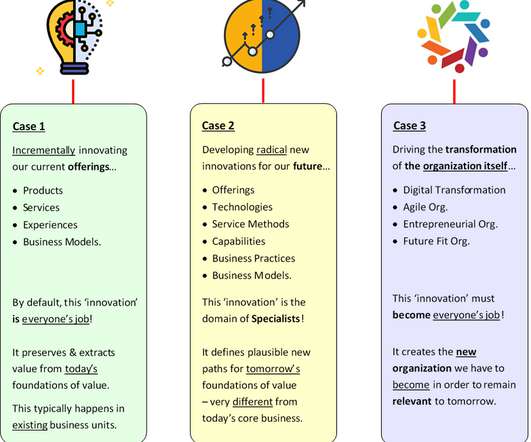Incremental or Radical Innovation?
IdeaScale
OCTOBER 12, 2017
Is incremental or disruptive innovation better? In your approach to innovation, you should weigh them both. What Is Disruptive Innovation? Disruptive” boils down to a drastic shift in how your business or your entire industry changes. That said, disruptive innovation is a gamble. Contact us.



































Let's personalize your content